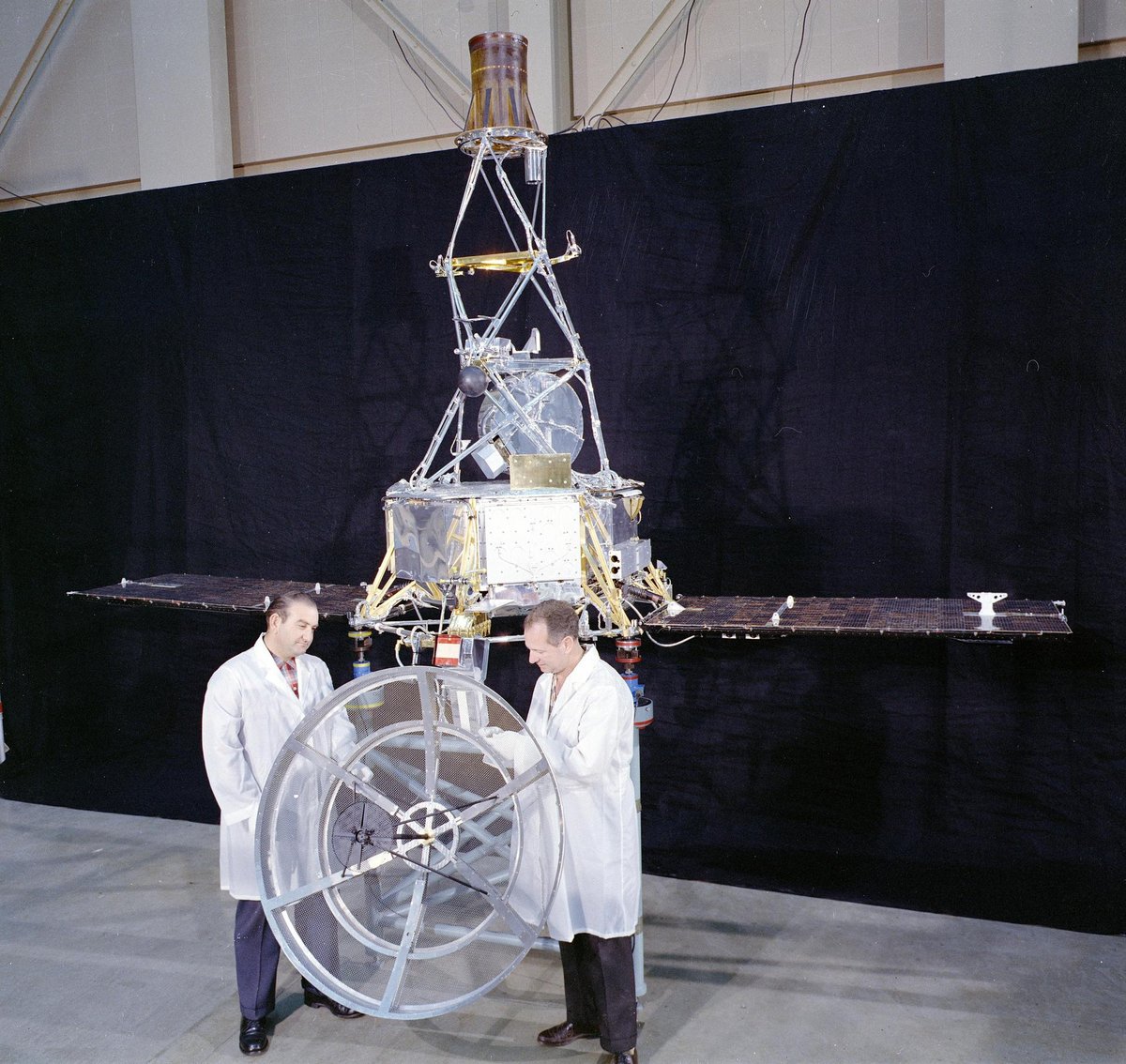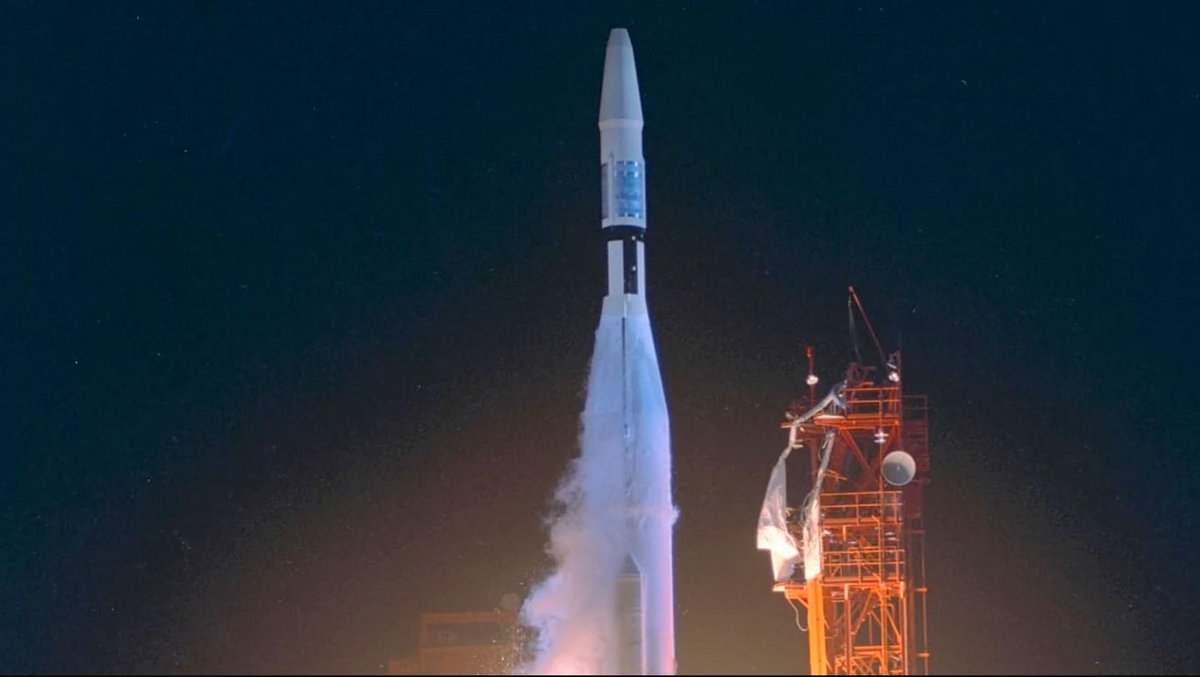This is a time when NASA needs success against Soviet prowess. Why not an overview of Venus ? The operation is more complex than it seems, and as always in this era of pioneers, the competition is strong. But on December 14, 1962, the small active probe crossed the neighbor of the Earth…
His abilities, however, were very limited.
The nearest planet
Shortly after the very first space feats of the great powers in 1957 and 58, the question of expansion towards the most obvious destinations made its way, in the USSR as in the United States. The indisputable destination after orbit was of course the Moon, with the arrival of human spaceflight. But then ?
From the first satellites, the visit of the other planets of the Solar System is on the table. Venus is the closest of them… but like Mars, Venus only comes close to Earth at regular intervals, in this case every 19 months. For space nations that have a lot of problems due to the delays of these brand new technologies and their launchers, aiming for a particular “window” is complex…
And what about probes! The majority of scientific satellites have a very short lifespan, even though a trip to Venus exposes fragile electronics to much greater radiation.
missed opportunities
The first realistic opportunity came in June 1959, but neither of the two space powers at the time had the means to send a vehicle to Venus. The Moon itself is still in sight. The second takes place in February 1961, but NASA faces so many problems in the months before with its lunar missions, which fail because of the launchers, that no attempt can take place.
However, the USSR tried it. It provides for two take-offs of impactor vehicles only a week apart, with an identical design and the same mission. Foresight paid off, as the first of two shots failed during the last phase of the launch, and the probe remained stuck in low orbit. The second attempt was successful and the Soviets named it Venera-1. The probe is even the first to fly over Venus… Well, maybe. Indeed, at about 100,000 km from the goal, the earth stations lose contact.
A very relative mission success, therefore, since it brings nothing if not a lot of lessons for the next attempt.
Everyone on the bridge !
The next shooting window towards Venus opens in the summer of 1962, and this time the two great powers want to sign a first. NASA made a risky choice in July 1960, entrusting the Jet Propulsion Laboratory (JPL) with the difficult task of designing a probe capable of flying over the planet-hell. Because at the time, the latter did not have the reputation for excellence that it has today… It is even rather the opposite!
The center bases its two twin probes on the design of the vehicles of the Ranger program, which is used to try to photograph the lunar surface up close before going to crash there. Problem, as 1962 begins, the first three missions are resounding failures, and the fourth joins the group in April. This does not bode well for Venus!
Recipe for a successful marinade
Mariner 1 and 2 (also called Mariner-R, there are finally three of them, with a model intended for the ground), which are therefore identical, are platforms of approximately 202 kg, of which 22 kg are devoted to the instrumentation. The platform is heavy, but that’s normal: it’s the beginnings of interplanetary probes! The electronics, in particular, are protected to the maximum. In addition, there is the need to maneuver and permanently keep means of communication oriented towards the Earth: the probe must therefore be stabilized on three axes, which is complex.
The JPL chooses to use nitrogen jets (inert gas) and a solar pointer to have a permanent reference. The Mariner-R probes are also equipped with two solar panels that deploy on the sides, and several antennas, the largest of which is located at the rear and is a dish 1.2 meters in diameter. On board there is a microwave radiometer (measurement of the radiation emitted by Venus), an infrared radiometer (temperature of the planet), a magnetometer, a cosmic particle detector, a solar wind analyzer and a gravitational experiment based on the measurement of the radio waves emitted by the probe.

It will be noted that there is no imaging device. Indeed, the payload is limited, the teams do not know if the throughput will allow them to reconstruct a correct photograph and above all, knowledge is already advanced enough to know that Venus has a dense atmosphere, so there is no ” much” to photograph in the visible bands at very low resolution.
It was better to do two
On July 22, 1962, Mariner-1 took off, and NASA engineers were over the moon: they were ahead of their Soviet competitors! But the launcher deviates from its trajectory very quickly and the teams on the ground have no choice but to destroy it. Urban legend or not, this failure is regularly attributed to an error in the computer code of the trajectory calculator of the Atlas-Agena rocket: a bad copy of a dash would have blocked the entire program. Anyway, Mariner-1 is disintegrated, and the United States does not have much time to be able to send the second probe.
This time, the Americans are in luck! Indeed, the USSR had no less than three probes ready to go to Venus between mid-August and early September 1962… but the Soviets are still facing huge problems on the upper stage of their rocket, which must be turned on in low orbit to “target Venus”. And the latter will suffer three failures in three attempts, that in four weeks. Engine problem, valve problem, problem of bubbles in the propellant… Venus is out of reach. The way is clear for NASA, which succeeds in launching Mariner-2 on August 27, 1962.

44 minutes after its launch, the Mariner 2 probe has successfully extended its solar panels, and it can communicate with the ground. It is a great success, because she is indeed on her way to Venus! It remains to be seen how far it will be able to fly over our neighboring planet. The calculations are difficult, not only because the probe is difficult to detect, but also because the latter has some pointing problems.
According to initial estimates, the gap during the flyby of Venus could reach 400,000 km. This is too much, so a corrective maneuver is needed. Which was planned… and which is also a dilemma. The later in the mission it is carried out, the more it will be possible to be precise. But the longer it is delayed, the more likely it is to fail due to the limited lifetime of the systems. The thrusters will finally be ignited on the night of September 4 to 5, 1962, and reduce the distance to 41,000 km. It was not the desired value, but it is already better.
Venus, vidi, vici
The trip to Venus was not easy. Two breakdowns of the stabilization system in September are attributed to impacts with micrometeorites (which seems doubtful 60 years later), followed by the failure of a solar panel, which ended up being definitively broken… But the proximity of Venus and the Sun make it possible to obtain enough energy with only one of the two in operation.
On December 12, the operators on the ground realize that the onboard software will probably be unable to automatically trigger the data captures, so the commands must be sent manually. But on December 14, despite the problems (and the saturation of some of the sensors), the overflight took place as planned, at an estimated distance of 34,854 km altitude! Measurements can take place and data is transferred until January 3. Mariner-2 is the first active probe to have flown by another planet in the Solar System.

The mission is placed on a pedestal by the Americans, who really need this success after the unsuccessful attempts to the Moon, their delay in manned flights in the face of the Soviet Vostok program and the costs announced for the race to the Moon which starts everything fair, but which already promises to engulf billions of dollars.
It remains a major accomplishment…but ironically, even as the United States pulled off that first, it was essentially a technical feat without a major follow-up. The USSR, for its part, will continue its Venera program for two decades with more than ten missions and major successes up to the surface of Venus.

What’s more, the lens wasn’t small… © Wikipedia Commons
Read more

1